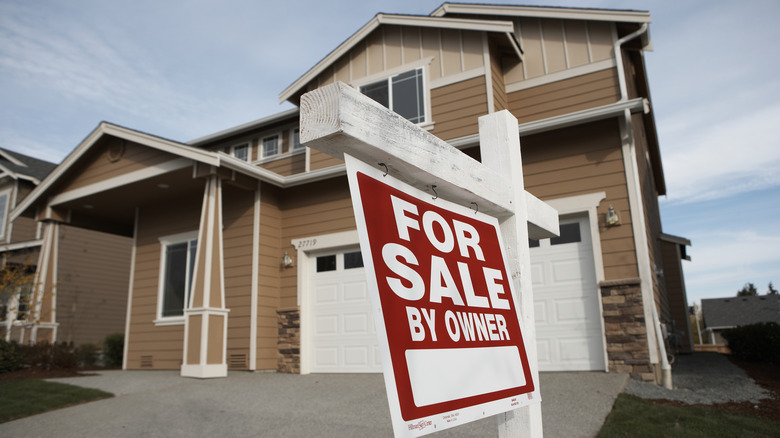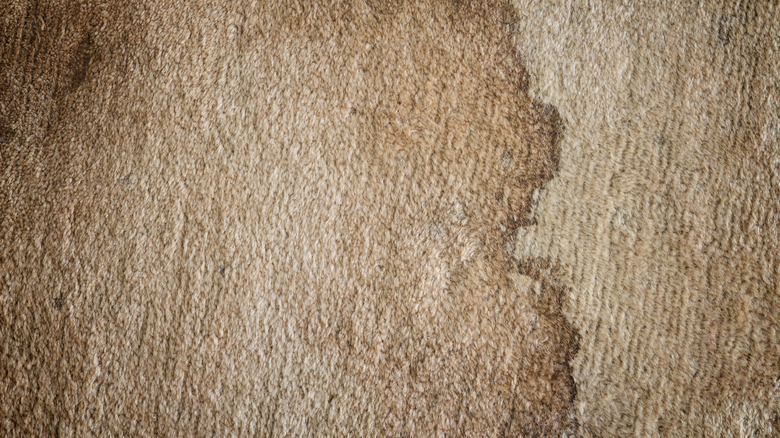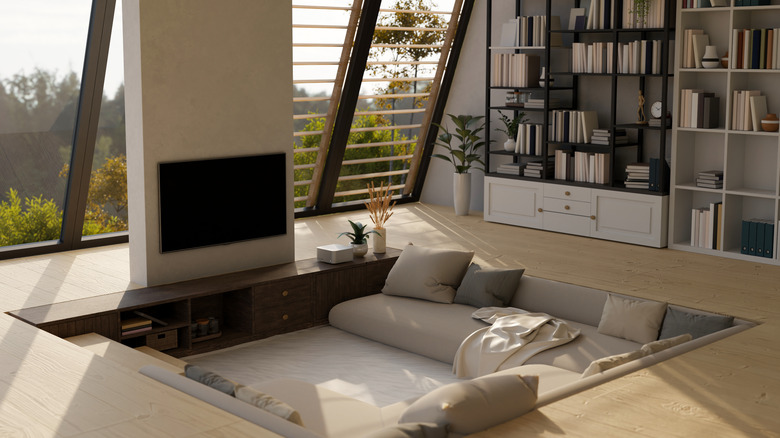The Worst Features The Stars Of Unsellable Houses Have Seen In Clients' Homes
Anyone who has tried to buy or sell a home knows how precarious the market can be. Putting your home in the best state helps to ensure that it sells quickly and for the highest price. While some unfortunate home features may include outdated designs, Leslie Davis and Lyndsay Lamb from HGTV's "Unsellable Houses" have encountered features that few buyers would ever want. "I saw a lady, last year, turn an in-ground pool into an outdoor terrarium," Davis said in a 2023 interview with House Beautiful. "She put a plastic dome over the top. You walk downstairs into the bowl of the pool, and then she filled it with dirt and rocks and plants and wanted to sell her home like that."
To be fair, pools aren't always a value add, either, adding only an increase of about 7% in home value in the best cases. That's because some potential buyers might see pools as extra maintenance on top of the cost of buying the home. If the home you're trying to sell has an in-ground pool, a better option is to feature the pool as a benefit to the home and allow buyers to decide if they want it. However, the sight of an in-ground terrarium would be a huge shock to any potential home buyer. Since a terrarium isn't a feature that most homebuyers are looking for, it's unlike to add value when selling.
Carpet isn't always a needed feature
An in-ground terrarium where a pool should be might sound like the worst exterior feature that HGTV's "Unsellable Houses" crew have ever encountered, but it's not the only bizarre one they noted. On the inside of a different house, though, Lyndsay Davis noted a different unacceptable feature. "I have seen carpet on all walls, including the ceiling," she said in the interview with House Beautiful. "We actually had a lady carpet her ceiling just last week. I said, 'Why?' And she goes, 'Oh, because it was showing the old beam from when it was built (because it was in a basement), and I just thought that this would be more aesthetically pleasing.' It was a rainbow carpet, and she thought somebody could use it as a kids' room."
Most potential buyers would prefer hardwood floors, so carpeting tends to be a turnoff — especially covering an entire room. Carpeting for a kids' room or playroom can be especially tricky as there can be stains from spilled paint or juice that may be difficult to remove. Most people dislike carpet because it feels like a surface that can never fully be cleaned. So, having carpet on the walls, ceiling, and floor is sure to turn away buyers. In the same interview, Lamb mentioned carpeting in the bathroom as a feature that often needed to be removed from the homes they renovate. Carpet in the bathroom can stay damp for longer, increasing the chance of mold growth. For the best resale value, it's best to stay clear of carpet and stick to hard floorings like wood, vinyl, or tile.
Making the best of unsellable features
Not every home Lyndsay Lamb and Leslie Davis encounter has a jarring feature such as an in-ground terrarium or all-carpeted room. Some unsellable features have to do with the home's original architecture. For example, a sunken living room was once considered a cool feature in 70s homes. This, however, isn't conducive to contemporary homeowners and is often seen as a safety risk, especially for young children and older adults. The best solution is to remove that sunken area so the floor is level throughout the main living space.
In another home featured on the series, a homeowner had raised pigeons, but Davis and Lamb feared that would scare off buyers. Instead, they made it a chicken coop that matched the facade of the house, which has a broader appeal to homebuyers as most homeowners would rather raise chickens for eggs than have pet pigeons.
Many homes will have what others might consider "unsellable features" that are a little more common, such as half-walls, bright paint colors, and permanent light fixtures are easy features to remove to make a home more appealing. When selling a home, you want to attract a wide audience by creating a blank slate that potential buyers can see themselves in. Sometimes, that means removing a feature altogether, and other times, it means transforming it into something else or highlighting it in a new way. What once hindered the sale can become a defining feature of a home.


